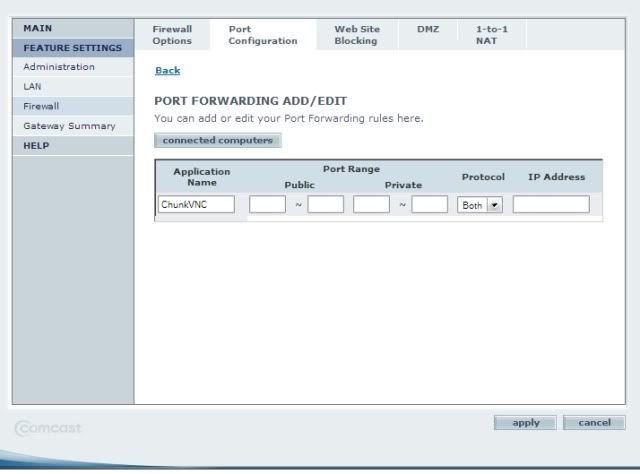Jorge Jimenez wrote:Hi,
This is where I'm now, so I need some answers, please:
1-I'm running (chunkvnc) on the same PC. (Viewer, Server, Repeater),
2- I'm not behind a router, only connected to the DSL provider modem,
3-I have a static IP (No-IP),
now:
4-how can I check ports are open (5500,5901),
5-do I still have to edit \Viewer\bin\chunkviewer.ini file after compiling and put in local IP address (192.168.xxx.xxxx) instead of the WAN address,
6-Do I compile with the static (No-IP) address,
Thanks,
Jorge.
1. Obviously you won't be using the both the Viewer and Server from that PC other than testing.
2. The DSL Modem is in all likelihood ALSO a router, especially since you mention the 192.168.x.x addressing that the DSL modem/ROUTER is providing you.
3. Technically you have dynamic DNS service from No-IP.com because you have a DYNAMIC, not static IP address. But we know what you meant.

4. It's easy to check open ports with a service like ShieldsUp (easiest to Google it). supercoe usually recommends a different probing service. You just access the web site from the PC you think has the open ports.
5. You only have to change the INI files to use the local address (for viewer/server use within your local network) if you find your particular router doesn't relay requests for your public address back inside to the repeater for you (DNAT). Just try pinging your public IP address and see if it works. (A better test, if you can, is to try to telnet to the repeater on its public IP address and service port from another machine on the LAN.)
6. Yes, for normal use from the the outside, you'd want to compile with the No-IP provided NAME (not IP address) of your repeater/dynamic public IP address.
I assume you've configured your DSL modem/router or some local software to do the required No-IP dynamic DNS updates (as your IP address changes)?
As to port forwarding, you will in all likelihood have to get into your modem/router's interface and configure it. Look up the model number for a manual if you need to. Nothing's going to reach a private 192.168.x.x address from the outside unless you specifically port forward or DMZ.



